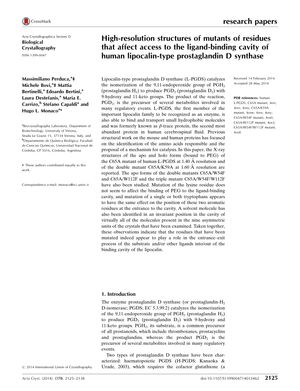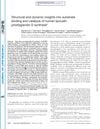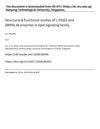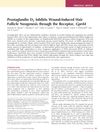High-Resolution Structures of Mutants Affecting Access to the Ligand-Binding Cavity of Human Lipocalin-Type Prostaglandin D Synthase
July 2014
in “
Acta Crystallographica Section D-biological Crystallography
”

TLDR Mutations in the enzyme don't significantly change how it binds to its specific substances.
The document details a study on the structural effects of mutations in human lipocalin-type prostaglandin D synthase (L-PGDS), an enzyme involved in the production of prostaglandin D2. High-resolution X-ray structures of various mutants were analyzed to understand how these changes affect the access to the enzyme's ligand-binding cavity. The study found that mutations did not significantly alter the binding of polyethylene glycol (PEG) or the position of tryptophan residues at the cavity entrance. The presence of a solvent molecule was consistently observed within the cavity, suggesting its role in substrate and ligand entrance and exit. The study also reported that the holo forms of the mutants were more compact than the apo forms, indicating tight contacts with the ligand. The dissociation constants for the double mutant were determined to be 321 µM by fluorometric titrations and 297 µM by isothermal titration calorimetry, confirming the interaction between L-PGDS and PEG. These findings provide insights into the structural aspects of L-PGDS function and its interaction with ligands.




